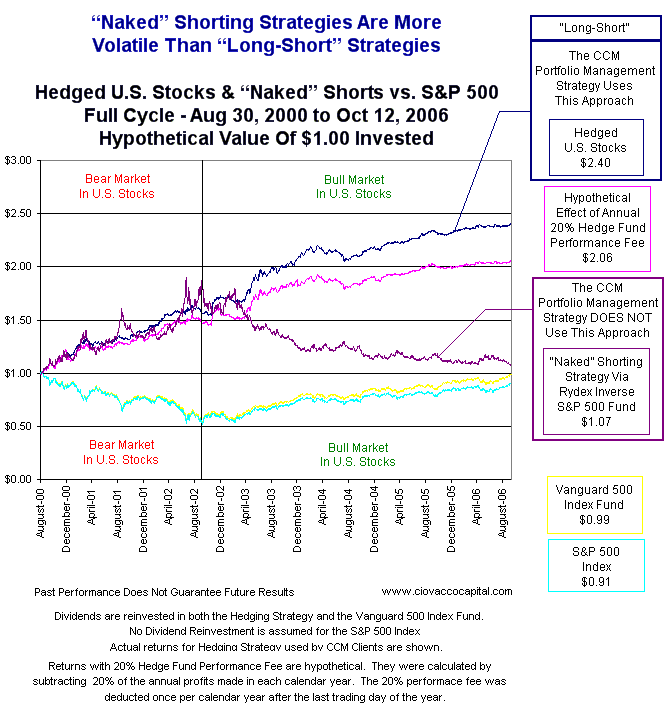Equity Long Short
Equity Long Short | Hedge Fund Strategy
 As part of HedgeFundBlogger.com's Hedge Fund Strategy Guide here is a short guide to the Equity Long/Short hedge fund strategy:
As part of HedgeFundBlogger.com's Hedge Fund Strategy Guide here is a short guide to the Equity Long/Short hedge fund strategy:The earliest known practitioner of the equity long/short strategy was Alfred Winslow Jones, commonly thought to have established the first hedge fund in 1949 by developing a tactic that would succeed regardless of whether the market rose or fell. He came up with the idea of hedging market risk by taking both long and short equity positions.
Thus, in their simplest formulation equity long/short strategies are designed to minimize exposure to the market. Instead, they profit from a change in the spread between two stocks. This is achieved by buying an undervalued stock and selling an overvalued stock. The short portfolio serves several functions: it acts as a hedge against market decline, gives managers an opportunity to add value by selecting stocks that are most likely to underperform the market and collects interest on the short amount. What is important in long/short trades is that the long position outperforms the short position on a relative basis. Thus, the position may still be profitable if both stocks decline insofar as the long position declines less that the short position.
Equity long/short managers vary in their level of exposure to the market. Some managers will maintain a long bias, such as 130/30 hedge fund managers. Others will hold equal dollar amounts of long and short positions and will therefore be market neutral. While it is possible to construct an equity long/short portfolio with a short bias, this is usually a short-term strategy as equity markets tend to have a long-bias. Equity long/short managers can also be distinguished by the geographic market in which they invest (US, Europe, Emerging, etc), their investment style (value, fundamental, quantitative, activist etc) or sector (financial, healthcare, tech, etc).
Books related to equity long/short funds
Lhabitant, Francoise-Serge. Handbook of Hedge Funds. West Sussex: John Wiley & Sons, Ltd., 2006.
This is an excellent guide to the industry, with concise and informative descriptions on all of the major hedge fund strategies and primary methods to measure their risk and performance. Lhabitant also includes an overview of the legal environment of hedge funds and their organizational structure, while ending with a short guide to investing in them. In his description of equity long/short strategies, Lhabitant provides a detailed description of the mechanics of constructing a long/short position and portfolio.
Equity long/short white papers and articles
Fung, William and David A. Hsieh. “Extracting Portable Alphas From Equity Long-Short Hedge Funds.” Journal of Investment Management, Vol. 2, No. 4, Fourth Quarter 2004.
Fund and Hsieh use data from three different sources to show empirically that between 1996 and 2002, Equity long/short hedge funds have significant alpha to both conventional and alternative risk factors.
Fung, William and David A. Hsieh. “The Risk in Hedge Fund Strategies: Theory and Evidence from Long/Short Equity Hedge Funds.”
In this paper, Fund and Hsieh seek to answer three basic questions: is the source of return in long/short equity hedge funds different from long-only mutual funds; are long/short equity hedge funds exposed to similar risk factors as long-only mutual funds; and do long/short equity hedge funds provide excess return beyond compensation for systemic risk? They find that. . . This paper also provides an overview of the mechanics of constructing and modeling the performance of an equity long/short portfolio.
Freed, Steven F. “An Overview of Long-Short Equity Investing.” November 29, 1999
In this paper, Steven Freed briefly outlines the basics of constructing an equity long/short portfolio. He also describes three sources of return in equity long/short investing and the effect of market movements on them.
McFall Lamm Jr, R. “The Role of Long/Short Equity Hedge Funds in Investment Portfolios,” DB Absolute Return Strategies.
This paper examines the historical returns of long/short equity hedge funds and argues that these funds have outperformed traditional long-only equity exposure and do so with lower risk. The paper also includes a good description of the equity long/short strategy.
Schmitz, John J. “An Introduction to Market Neutral Equity Strategies”, SciVest Capital Management Inc.
This powerpoint presentation provides a good description of the fundamentals behind putting an equity long/short strategy together. Also looks at the advantages of the strategy and risk management techniques that could be used in when putting together an equity long/short strategy.
The Case For Long/Short Equity as a Tool in Traditional Asset Class Construction argues that the long/short equity approach should be thought of as a specific asset class when building a portfolio because it adds value to a long-only and tracking error-constrained strategies.
Tracking
Credit Suisse Tremont Hedge Fund Index
CS/Tremont tracks provides registered users with historical data on the performance of variety of hedge fund strategies.
Guest post contributed by Sharini Kulasinghe
Free Daily Hedge Fund Newsletter
Related to Equity Long Short Hedge Fund Strategy:
- Top 52 Most Popular Articles
- Hedge Fund Tracker Tool
- Financial Certification
- Hedge Fund Forum
- Hedge Fund Accountants
- Investment Consultants
- Investment Book
- Hedge Fund Terms and Definitions
- Geographical Hedge Fund Guides
- Hedge Fund Database
Tags: Equity Long Short, Equity Long Short Fund, Equity Long Short Investing Strategy, Long Short Equity Hedge, Constrained Long Short Equity Portfolios, Canadian US European Long Short Managers and Investments
No comments:
Post a Comment
Note: Only a member of this blog may post a comment.